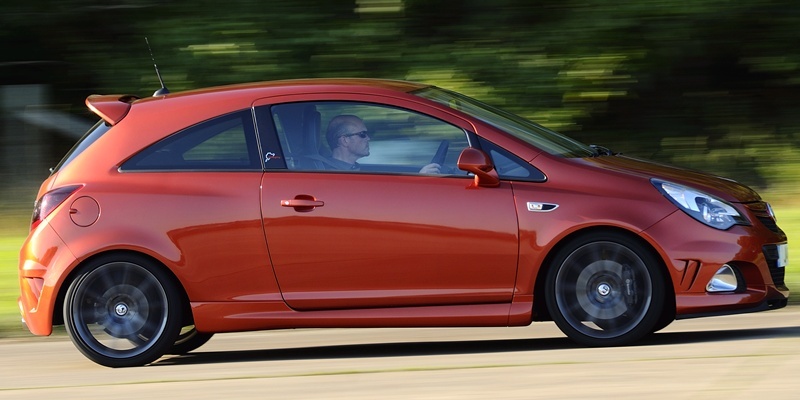I’m flying along the tarmac in the Corsa VXR Nurburgring, my foot to the floor. I whip through a double bend, using both sides of the road and skidding slightly before regaining control. Then it’s a race up through the gears again until the needle says I’m doing 100mph and it’s time to brake for the next corner.
To any readers outraged by my irresponsibility, I say: do not worry, all this happened safely within the confines of Knockhill race track.
I’m behind the wheel of Vauxhall’s most powerful ever Corsa. The VXR Nurburgring was developed at sister company Opel’s performance centre inside the legendary German race circuit complex. Its 1.6 litre turbocharged petrol engine puts out a hefty 202bhp, making it among the most powerful small hot hatches. It’ll do 0-62mph in 6.5 seconds and has a top speed of 143mph.
But the numbers don’t tell the full story. Vauxhall/Opel’s engineers have worked hard to make sure this is the most drivable hot Corsa ever. There’s a mechanical limited slip differential, which allows the driven wheels to rotate at different speeds.
The result of this is a front-wheel drive car that behaves almost as if it’s rear wheel drive. You can go on the power far sooner in a bend than is usually possible, and if you carry too much speed the back end is more likely to flick out than the front is to run wide.
The standard VXR brakes have been replaced by a Brembo set that are more powerful yet 30% lighter. There’s new suspension and the Nurburgring edition rides 20mm lower.
It’s a fabulous driver’s car, and although my time with it was limited to the track, I think it would prove equally entertaining on the Queen’s Highway (albeit driven with a much greater degree of caution).
At £22,295, it’s more than £3,000 more expensive than the standard VXR, and some might balk at paying that much for a Corsa. But there’s a lot of extra engineering in the car, and plenty of details to hint at its pedigree.
There are new “eagle eye” headlights, 18″ alloys and a menacing looking bodykit. Inside, there ars Recaro bucket seats and smart “Nurburgring” logos.
At 37.2mpg, fuel economy isn’t bad although that figure will dip dramatically if you drive it as I did and in VED band I, it’ll cost £315 in its first year and £210 thereafter. It also comes with Vaxhaull’s “Lifetime 100,000 mile Warranty” for a bit more peace of mind.
After I’d completed half a dozen laps, Knockhill instructor and race driver Jonathan Adam took to the wheel to show me exactly what the car could do. The next five minutes passed in a blur of fear and exhilaration, as we drifted sideways through every corner, accelerated and braked savagely, and generally used the VXR Nurburgring in the manner its makers intended.
If this isn’t the best hot hatch I’ve driven then I’m Hugh Grant. It is a little pricey though.
Price: £22,295. 0-62mph: 6.5 seconds. Top speed: 143mph. Fuel economy: 37.2mpg. CO2 emissions: 178 g/km.
